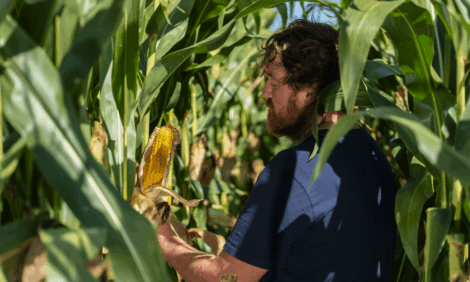



Australia Livestock and Products Semi Annual 2007
US - By USDA, Foreign Agricultural Service - This article provides the cattle industry data from the USDA FAS Livestock and Products Annual 2007 report for Australia. A link to the full report is also provided. The full report includes all the tabular data which we have omitted from this article.Report Highlights:
Beef exports for CY 2007 are forecast at a record 1,495 TMT. The forecast for record high exports is underpinned by historically high production and slaughter due to extreme drought conditions. The outlook for pasture conditions is described as “difficult” in the short term, with significant improvements not expected until the second half of CY 2007. Despite prolonged drought conditions, prices have remained high, keeping cattle numbers at historically high levels. Near record cattle-on-feed numbers indicate strong exports to Australia’s two primary grain fed markets, Japan and Korea. Exports of beef to Japan remained fairly steady in 2006; exports to Korea increased 20 percent and now represent 16 percent of total Australian beef exports.SECTION ONE: SITUATION AND OUTLOOK
SummarySince Post’s last report, severe drought conditions have persisted and in some key regions of southern Australia have worsened. South Eastern Australia, principally NSW and Victoria have generally experienced the worst of conditions and according to reports, are now experiencing their lowest rainfall conditions for 115 years.
Parts of Northern Australia such as Queensland and the Northern Territory have experienced heavy rainfall, as well as coastal areas in NSW and Victoria, but remain well below optimal levels for production. Key regions in southeast Queensland and Northern NSW have also experienced heavy rainfall.
For the purpose of writing this report, post has assumed a return to more normal weather conditions in the second quarter of CY 2007 followed by a return to more normal pasture conditions in the second half of CY 2007.
A return to more normal climatic conditions is unlikely to greatly improve livestock production conditions until the second quarter of CY 2007. Southern Australia will not enter its window for pasture production until April. Even an immediate break in conditions would not likely see significantly improved pasture conditions prior to April unless above average rainfall were received.
Livestock prices have remained relatively strong considering the extreme drought conditions recently experienced and this has maintained a degree of commercial optimism among industry sources outside the farm sector. Structural changes over the past two decades, such as domestic grain market deregulation; high levels of investment in lot feeding and processing; and on farm advances in genetics, fodder management, and marketing have largely resulted in avoiding the market “crash” type situations of previous droughts. Some livestock markets have not however avoided sharp price decline and the “store sheep” market is an example of this.
The outlook for pasture conditions is described as “difficult” in the short term, with significant improvements not expected until the second half of CY 2007. Slaughter figures are expected to remain relatively high in the first half of CY 2007 before falling significantly in the second half. Production in the first half is expected to stay at the high levels experienced toward the end of CY 2006 and exports are likely to follow the same trend.
Drought conditions experienced in recent times has seen grain production, particularly winter cereals, fall to historically low levels. Conversely, Post has forecast consumption of grain to increase significantly. This increase has been principally driven by increased feed grain demand, particularly from intensive activities such as feedlot beef. As pasture conditions have deteriorated, more cattle have been finished in feedlots. Lower production and higher consumption will likely place pressure on consumers of feed grain to find new sources of feedstuff. The feeding of by-products, such as DDG, which is not yet common in Australian intensive feeding sector, is increasing in significance.
Further Information
To read the full report please click here (PDF format)
List of Articles in this series
To view our complete list of 2007 Livestock and Products Semi Annual reports, please click hereFebruary


